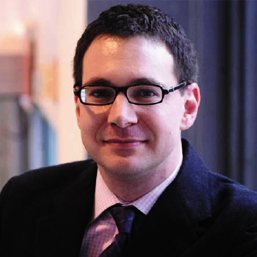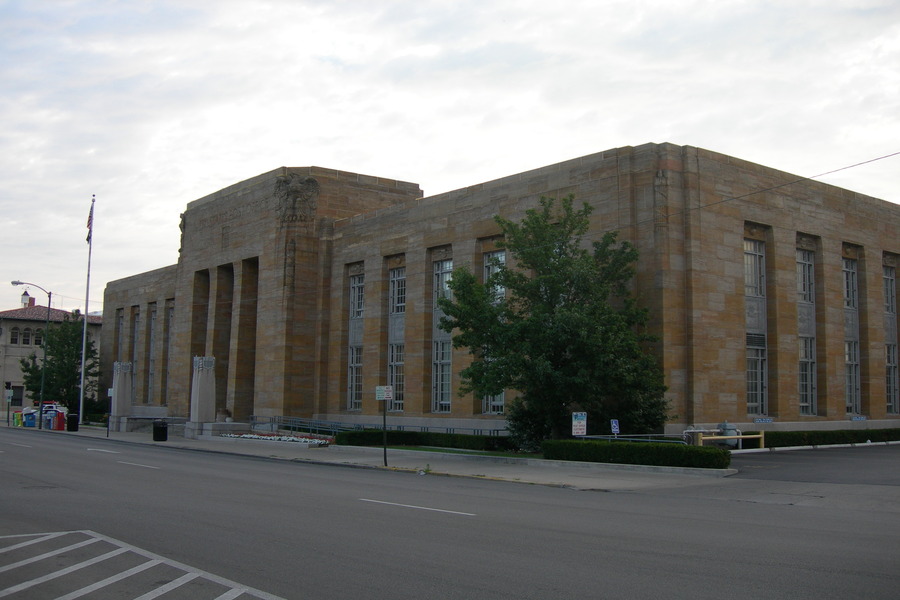Boston & Local Police Intelligence: an FBI Statement and a Response from Faiza Patel
Earlier today I posted a commentary on "Boston Bombings: Local Police and Counterterrorism Intelligence," based on reported claims that the FBI failed to pass on important threat information to the Boston Police Department, and further reported claims that -- if true -- this points to a need for greater information sharing. My main point was that in thinking about the lessons of the Boston Bombings for domestic counterterrorism intelligence, we should be focused less reflexively on the usual issue of info-sharing an
Published by The Lawfare Institute
in Cooperation With

Earlier today I posted a commentary on "Boston Bombings: Local Police and Counterterrorism Intelligence," based on reported claims that the FBI failed to pass on important threat information to the Boston Police Department, and further reported claims that -- if true -- this points to a need for greater information sharing. My main point was that in thinking about the lessons of the Boston Bombings for domestic counterterrorism intelligence, we should be focused less reflexively on the usual issue of info-sharing and more on questions of whether and how local police collect counter-terrorism intelligence, what role they play in analyzing and filtering it, and what local police do with information that's shared by federal agencies.
After the jump are two important statements, along with my short comments. First is a statement from the FBI regarding information sharing and the Boston case. Second is a critical response to my post from Faiza Patel of the Brennan Center for Justice, which has done a lot of work in this area.
First, here's the FBI's statement:
Joint Terrorism Task Force (JTTFs) members, including the state and local members, are responsible for maintaining awareness of possible threats to their respective jurisdictions. To manage and provide accessibility to the significant number of assessments conducted by the JTTF, each task force member has access to Guardian, a web-based counterterrorism incident management application that was launched in July 2004. In Guardian, threat and suspicious activity incidents are entered, assigned, and managed in a paperless environment and allows terrorist threats and suspicious activities to be viewed instantaneously by all system users. The primary purpose of Guardian is to make immediately available threat and suspicious activity information to all system users and to provide all users with the capability to search all incidents for threat trend analysis. Further, all JTTF members are able to perform customized key word searches of Guardian to identify relevant assessment activity. Boston JTTF members, including representatives from the Boston Police Department (BPD), were provided instruction on using Guardian, including suggestions on methods for proactively reviewing and establishing customized searches, which would allow them to be fully informed of all JTTF activity that may affect Boston and the Commonwealth of Massachusetts. Guardian allows for the necessary accessibility and awareness that otherwise would be unfeasible given the number of assessments that are conducted by the JTTF on a regular basis. Many state and local departments, including the BPD, have representatives who are full-time members of the JTTF, and specifically had representatives assigned to the JTTF squad that conducted the 2011 assessment of deceased terrorism suspect Tamerlan Tsarnaev. As set forth by law and policy, assessments may be carried out to detect, obtain information about, or prevent or protect against federal crimes or threats to the national security or to collect foreign intelligence when the information provided to the FBI does not rise to a level that would allow for the opening of a predicated investigation. By their very nature, and in accordance with U.S. constitutional restrictions, JTTF members are limited in the types of investigative methods that can be utilized in an assessment. In 2011 alone, the Boston JTTF conducted approximately 1,000 assessments, including the assessment of Tamerlan Tsarnaev, which was documented in the Guardian database. The Tsarnaev assessment was thorough, comprehensive, and fully compliant with law and policy. While sponsored by the Federal Bureau of Investigation (FBI), JTTFs are composed of federal, state, local, and tribal personnel and are based in more than 100 cities nationwide, including Boston. The JTTF is a collaborative environment that allows for the completely unrestricted flow of investigative information among task force members. Importantly, the purpose of sharing information freely is to create a force multiplier by enabling state, local, and federal officials to participate in the intelligence cycle by gaining awareness of activity that may affect their respective jurisdictions and then providing any information from their own records that might assist in the further analysis and investigation of potential terrorists. Further, fusion centers—entities separate and apart from JTTFs—are designed to provide terrorism-related information to the JTTFs for possible investigative purposes.
Just as I'm skeptical that information-sharing is the key lesson in the Boston Bombing case, I'm skeptical that existing JTTFs, vast databases, and Fusion Centers are well designed to effectively integrate local police into a national counterterrorism intelligence architecture. As my Columbia Law School colleague Dan Richman presciently wrote several years ago, for example:
When it comes to actually collecting intelligence, the contribution by local police forces to the national counterterrorism effort cannot be limited to that of officers designated to work with federal agents in the Joint Terrorist Task Forces. The JTTFs are now proving good vehicles for operational coordination in raids, undercover stings, and intensive surveillance. ... But a broad intelligence-collection effort will require a range of contacts between officials and community members far more extensive than any federal agency or task can provide. ... Simply put, no federal outreach effort can substitute for the quality and quantity of contacts that local police officers have within the neighborhoods they serve. And the federal government must do far more to reach a modus vivendi with these departments that fully comprehends, and indeed profits from, their order-maintenance and crime-fighting responsibilities. ... [T]he same channels used to pass local intelligence up to the feds (and federal intelligence back down) should also be used to pass along local concerns (parochial and political) about federal counterterrorism tactics.Second, here's Faiza Patel's response to my original post:
I agree with Matt that the role of state and local law enforcement agencies in the counter-terrorism architecture needs serious attention. We differ, however, in our assessment of how local cops can best be useful be in preventing terrorist plots. State and local police are involved in counterterrorism in at least three, sometimes overlapping, ways. For many police departments, the bulk of counterterrorism work is conducted through fusion centers. When officers come across activity that they deem “suspicious” – which could be photography, looking through binoculars, and taking notes – they record the information. It is then funneled to a nearby “fusion center,” assessed and fed into federal databases. In other words, the police create “dots” that might prove useful, which are then aggregated and disseminated by fusion centers. To date, however, there is no indication that the “dots” collected and passed along have served any counterterrorism purpose. DHS has not kept track of the utility of the system (their best guess of the cost, by the way, is somewhere between $289 million to $1.4 billion thus far). Last year, however, a bipartisan, two-year Senate investigation concluded that fusion centers have routinely produced “irrelevant, useless or inappropriate” intelligence that endangers civil liberties and have not contributed to disrupting a single terrorist plot. A second tactic – most famously employed by the New York City Police Department – is to infiltrate and monitor the American Muslim community which is considered to be the most important source of threats. Not only does this tactic raise serious constitutional and legal concerns, but there is little evidence that it is effective. Claims that police thwarted 14 terrorist plots against New York have been hotly disputed, and were further undermined when the commanding officer of the NYPD Intelligence Division testified that that a key part of their program, the Demographics Unit, produced no actionable intelligence in at least the past six years. The FBI and other major police departments have sought to distance themselves from the NYPD’s tactics. And, since the extent of the NYPD’s intelligence operations became public, there has been a noticeable cooling of relations between the police and community leaders, which risks undermining critical counterterrorism cooperation. The third way local cops function in the counterterrorism endeavor is by building relationships with American Muslim communities in the hope that they will report terrorist plots. As Matt has pointed out, building relationships of trust while conducting surveillance operations is a delicate dance. Beyond that, however, we need to be careful about exactly what we expect people to report. American Muslims have been enormously helpful in reporting criminal activity to law enforcement, with studies estimating that some 40% of terrorist plots since 9/11 were foiled with help from the community. But can we really expect ordinary citizens to pick up on ideological clues about whether or not someone is going to become a terrorist? At this time, there is no consensus within intelligence agencies or the social science academy about whether we can even identify the “signature words and behaviors of those who turn to violence,” much less what those indicators might be. So, yes we need to think about how state and local law enforcement is incorporated into counterterrorism efforts. But we should do so with a clear-eyed understanding of the limits of what local police can contribute and recognizing the risks to their relationships with the communities they serve.I am actually in agreement with much of what Patel says here.
Matthew Waxman is a law professor at Columbia Law School, where he chairs the National Security Law Program. He also previously co-chaired the Cybersecurity Center at Columbia University's Data Science Institute, and he is Adjunct Senior Fellow for Law and Foreign Policy at the Council on Foreign Relations. He previously served in senior policy positions at the State Department, Defense Department, and National Security Council. After graduating from Yale Law School, he clerked for Judge Joel M. Flaum of the U.S. Court of Appeals and Supreme Court Justice David H. Souter.




